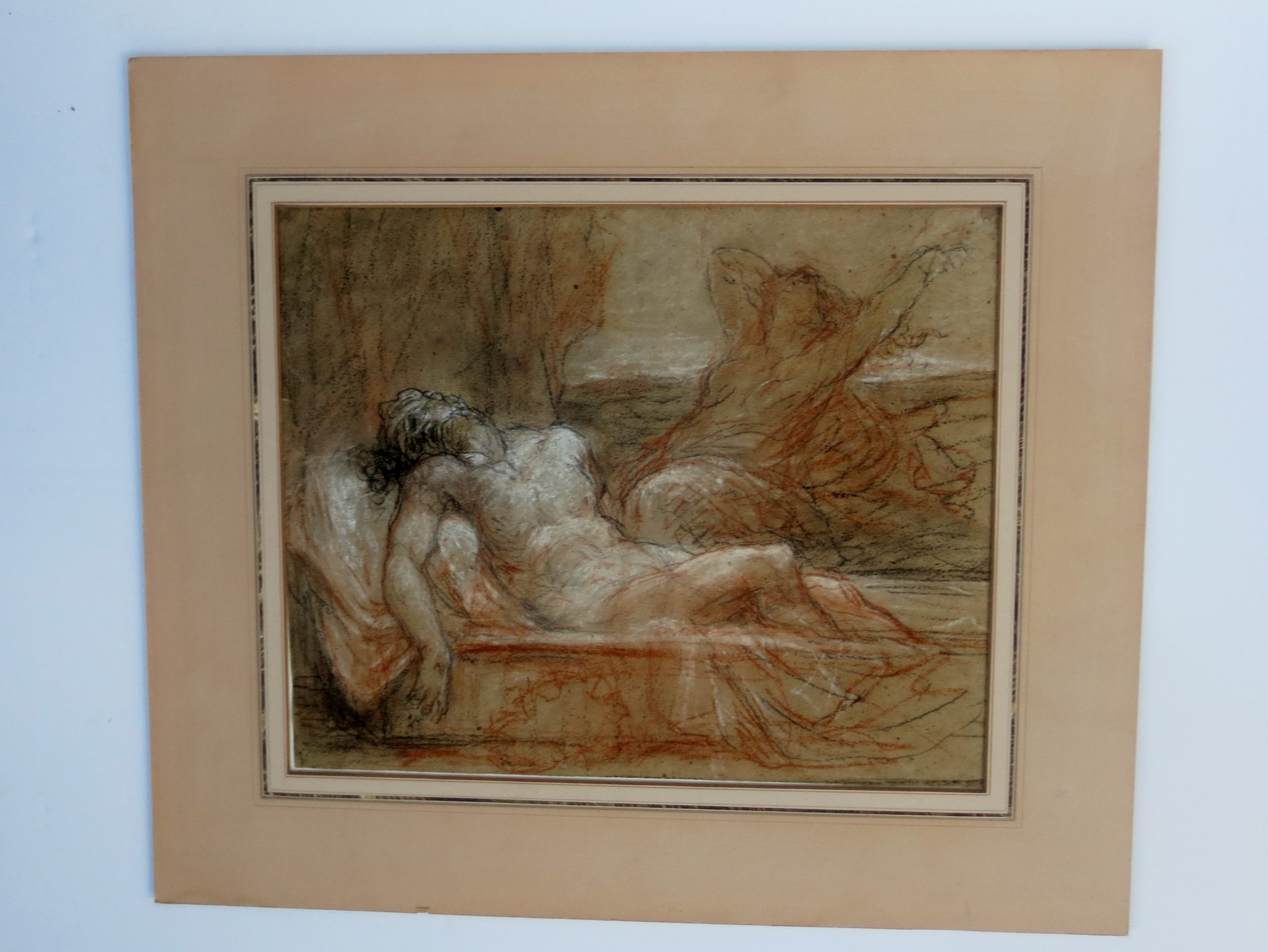The attribution of this drawing to Cigoli begins with its close kinship in three color chalk, loose black lines, and red and white rubbed highlighting in the energetic febrile rush and repetition of linear expansions across the sheet, black and painterly rubs of white and red local color and white highlighted areas of reserved open greenish toned paper. The material technique of this drawing is notably typical of Florentine work in tricolor (wax) chalks in the generation of Pontormo until the end of the century, for which cf. Joseph Meder, Die Handzeichnung: Ihre Technik und Entwicklung, Vienna,1919, pp.109-126, and James Watrous, The Craft of Old Master Drawings, Madison, Wisc., 1957, pp.91 ff. & 110 ff. As a major stylistic factor in this drawing, the color reproduction of a closely comparable Cigoli drawing in Rosaline Bacou, Great Drawings of the Louvre Museum: The Italian Drawings, New York,1968, No. 71 text and color plate, shows particularly close stylistic affinities for the attribution and dating of the present drawing.
Notable consistencies with the Louvre drawing can be noted in the formation of head and hands, and the freely flung linear implications of exploratory drapery movement not yet fixed as plastic forms. While the basic forms of Christ and the Virgin are established by traditional conventions, the dramatic focus of the entire event in the contrast of the two main figures, one supine, his hands touching the proto altar of the sepulcher in institution of the Eucharist, while the Virgin is all expressively active motion, her arms out flung in the pathos formula for extreme grievous agony. This contrast, and the orant gesture of mourning cries to divine succor can be found both in Tuscany art ultimately derived from antique prototypes adopted in Byzantine art and employed in Italy from the birth of the Renaissance on to the generation of Caravaggio and Cigoli, for which see Moshe Barasch, Gestures of Despair in Medieval and Early Renaissance Art, New York, 1976, Chapter VI, “The Lamentation over Christ and Related Themes”, pp. 57 – 86.

